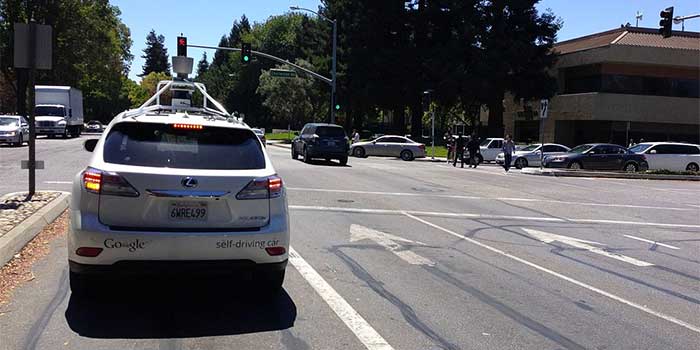The Experts Think Self Driving Cars Should Have Steering Wheels and Break Pedals
Earlier this week, GM CEO Mary Barra said she believes self-driving vehicles should continue to include steering wheels, brake pedals and accelerators as the technology develops. The state of California has already taken this position, requiring a licensed driver at the helm of all self-driving cars.
It’s Mostly For Safety Reasons
Because the technology is still in its infancy, having an experienced driver at the helm will allow the driver to step in and remedy any potential mistakes or bugs on the part of the autonomous car. However, according to Chris Urmson, Google’s director of its self-driving car project, “We need to be careful about the assumption that having a person behind the wheel will make the technology more safe.”
Similarly, Matthew Schwall, director of field performance engineering for Tesla Motors argues, “What you’re doing is taking away one of the most compelling features.”
As Urmson alluded to, there’s an argument to be made that by keeping traditional controls in place it not only limits the testing of self-driving technology, but also adds another possible point of failure. After all, licensed drivers have repeatedly proven capable of making all kinds of mistakes behind the wheel.
The DMV has taken a similar approach to Barra, with spokeswoman Jessica Gonzalez stating, “We’re definitely not against it. We just need to make sure that it’s safe.”
As we’ve written before, everyone agrees that ensuring the safety of self-driving cars is important, but defining what that looks like and agreeing on universal standards is easier said than done. Even automakers can’t come to a consensus on how self-driving technology should be regulated.
Enough other states currently allow for the testing of truly autonomous vehicles that companies like Google can continue to hone their technology. The question will be how long it takes for California to ultimately consider lifting restrictions and embracing the future.
It’s not hard to see why having a steering wheel and brakes is appealing to safety advocates and drivers alike. Barra’s insistence on continuing to allow for driver intervention is essentially an argument for a safety net. And who doesn’t want a safety net when their life might be in danger?
But Are Self Driving Cars Actually Safe?
The issue facing self-driving vehicles over the coming years is determining whether this safety net is real or imaginary. Regardless of whether it’s effective, if having a steering wheel and brakes will help alleviate consumer fears it might be a necessary step in encouraging adoption.
Even pessimistic projections expect fully self-driving cars to be the new standard by 2035. What Barra and the DMV are proposing is merely a bridge between what we already have and where we’re headed.


